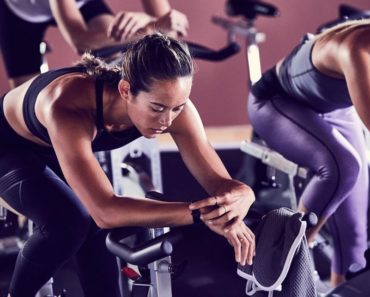
Stretching used to be so simple: You touched your toes a few times and off you went. Today, there are a lot of mixed messages — and things we don’t know. Is it better to stretch before or after exercise? What’s the best way to do it? Is yoga just fancy stretching?
To cut through the confusion, here’s a quick primer on common techniques, where your yoga practice fits in and how stretching can help deliver improved range of motion, flexibility, circulation and more kick-butt success in the rest of your workouts.
STATIC STRETCHING
Static stretching, when you hold a posture for a period of time, is one of the most common methods of stretching. There are two types of static stretching — active and passive.
With active stretching, you use the strength of one muscle group to stretch the opposing group. One muscle group is tensed and held in position and the opposing muscle relaxes and elongates. For example, if you’re stretching your hamstrings, your quads are working. Throughout, you’re playing an active role in stretching your muscles. The result is you strengthen one muscle and increase the flexibility of the other.
Recent research indicates passive stretching before a workout can actually decrease performance. But because it releases muscle tension more gradually, studies have shown it’s ideal for rehabbing muscles after an injury. Many trainers reserve it for a post-workout cool down and it can be a great antidote to a long day of sitting — whether that’s at a desk or after a long road trip.
READ MORE > STRETCHES FOR LOOSER HAMSTRINGS | 5-POSE YOGA FIX
DYNAMIC STRETCHING
Unlike static stretching, dynamic stretching involves continuous movement to gradually increase range of motion, speed or both. Don’t confuse this with the bouncing toe touches from gym class. Dynamic stretching is controlled, smooth and deliberate. It helps increase blood flow, raises core body temperature and wakes up the nervous system. Think about flowing between cat and cow to warm up the spine. Studies show including dynamic stretching as part of a warm up improves strength, agility and endurance, which may be why many fitness pros suggest dynamic stretching before a workout.
Most yoga practices use all three types of stretching. Moving through a sun salutation for a full-body warm up is dynamic stretching. The balance between contracting and stretching in active stretching can be found in most standing postures. For example, in warrior II, the quadriceps are working and engaged and that allows the inner thighs to stretch and lengthen. Whereas many of the more restorative poses found at the end of a class involve a passive stretch. For example, a seated forward fold uses the weight of the body under gravity as the torso folds over the lower body to stretch the back of the legs.
Of course, there’s a whole lot more than stretching and lengthening muscles in yoga. Physically it also incorporates strength, alignment and balance. The focus on breath and meditation helps with concentration, focus, stress and relaxation. Together, and when practiced regularly, it leads to head-to-toe, full-body benefits ranging from improved mental clarity and flexibility to cardiovascular health and better sleep.
GEAR UP FOR YOUR NEXT WORKOUT
> Men’s Compression Shirts
> Men’s Compression Shorts
> Women’s Compression Shirts
> Women’s Compression Leggings
> All Compression Gear
The post A Primer on Active and Passive Stretching appeared first on Under Armour.
(via MyFitnessPal Blog)






